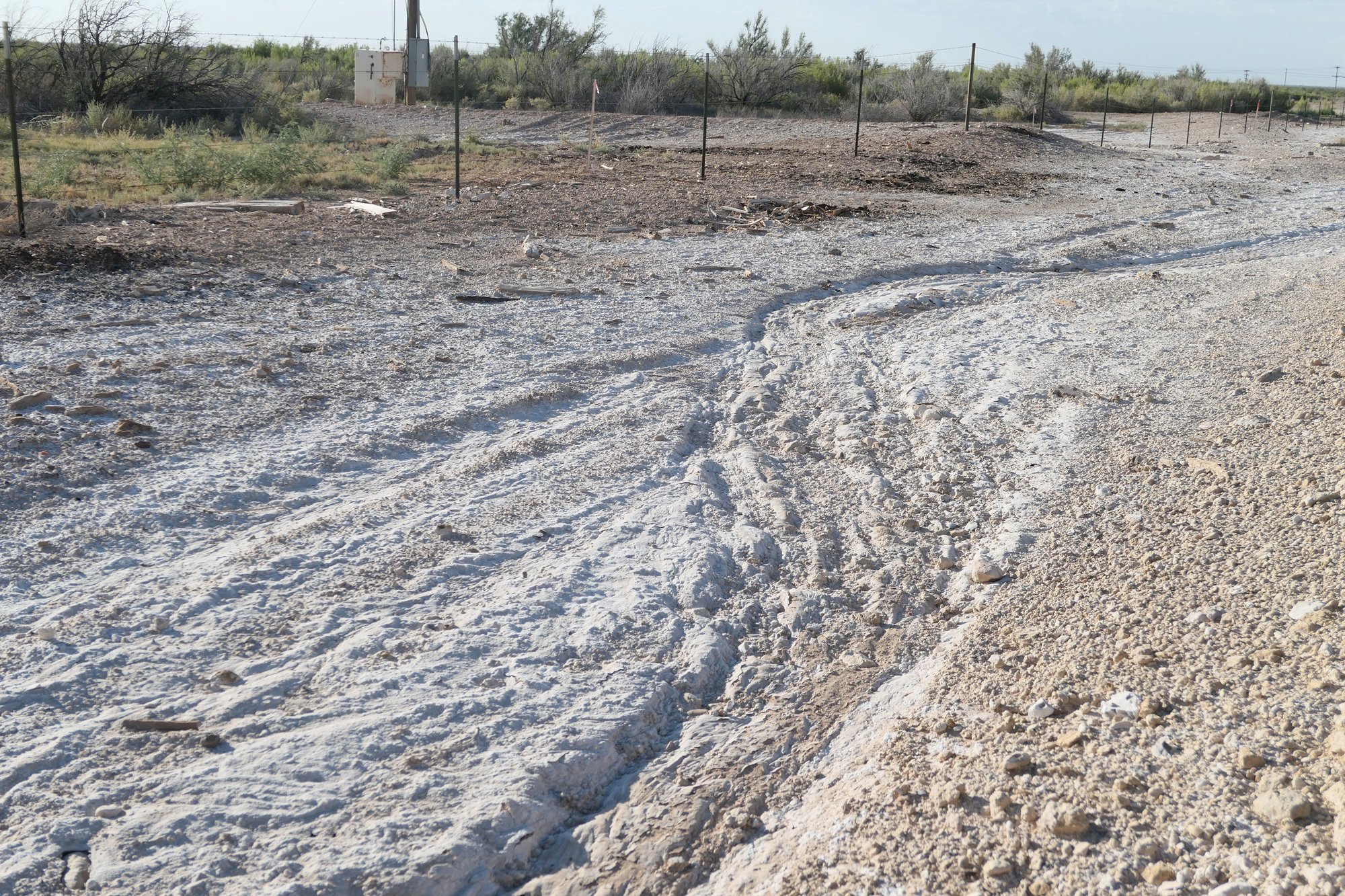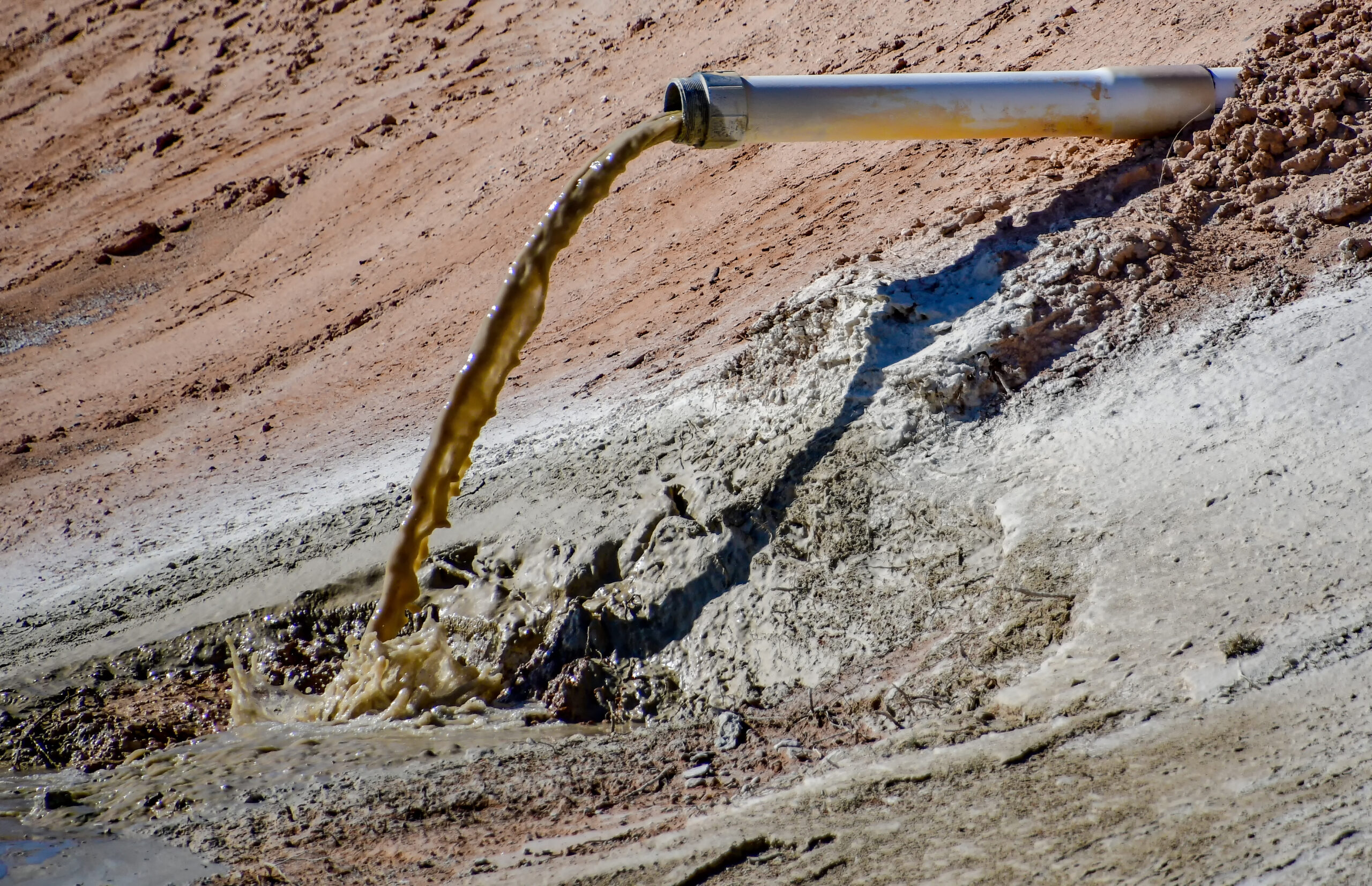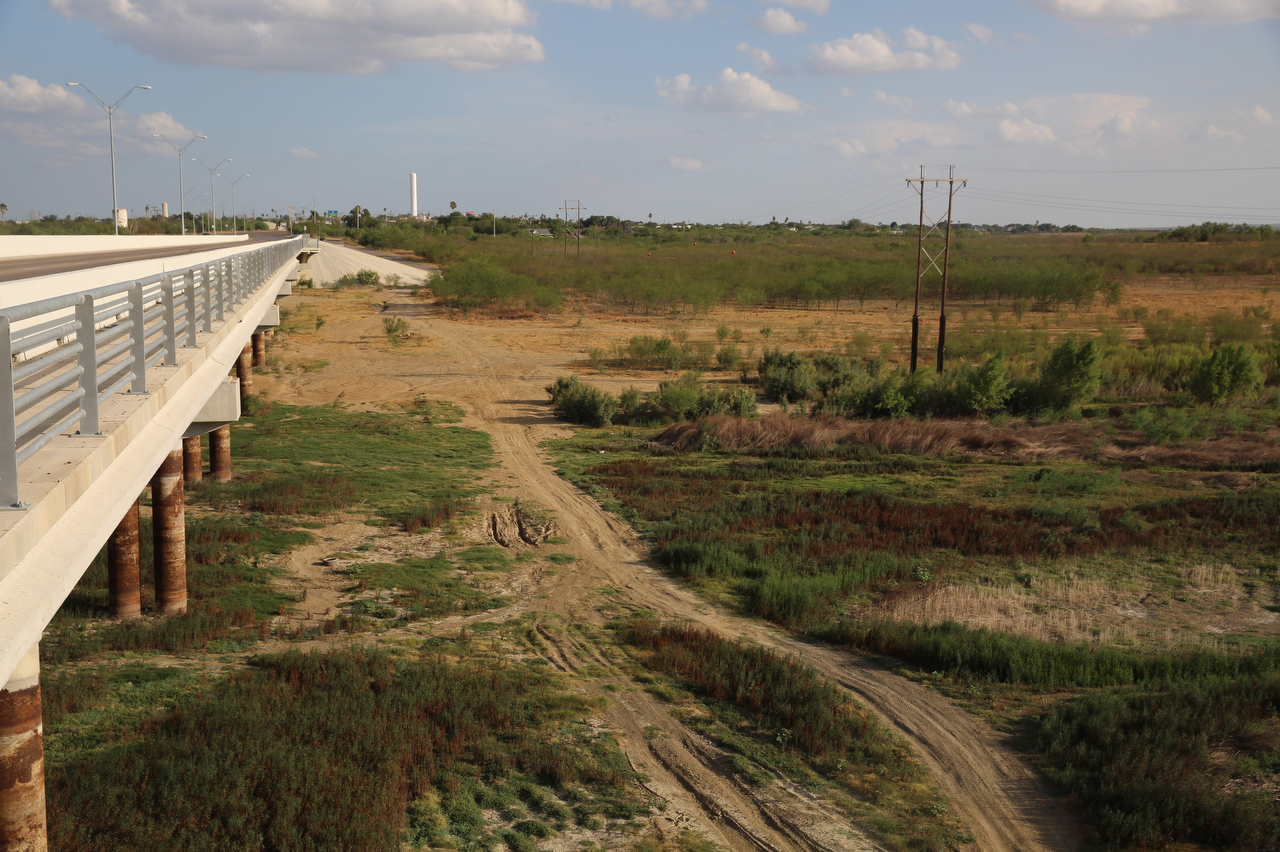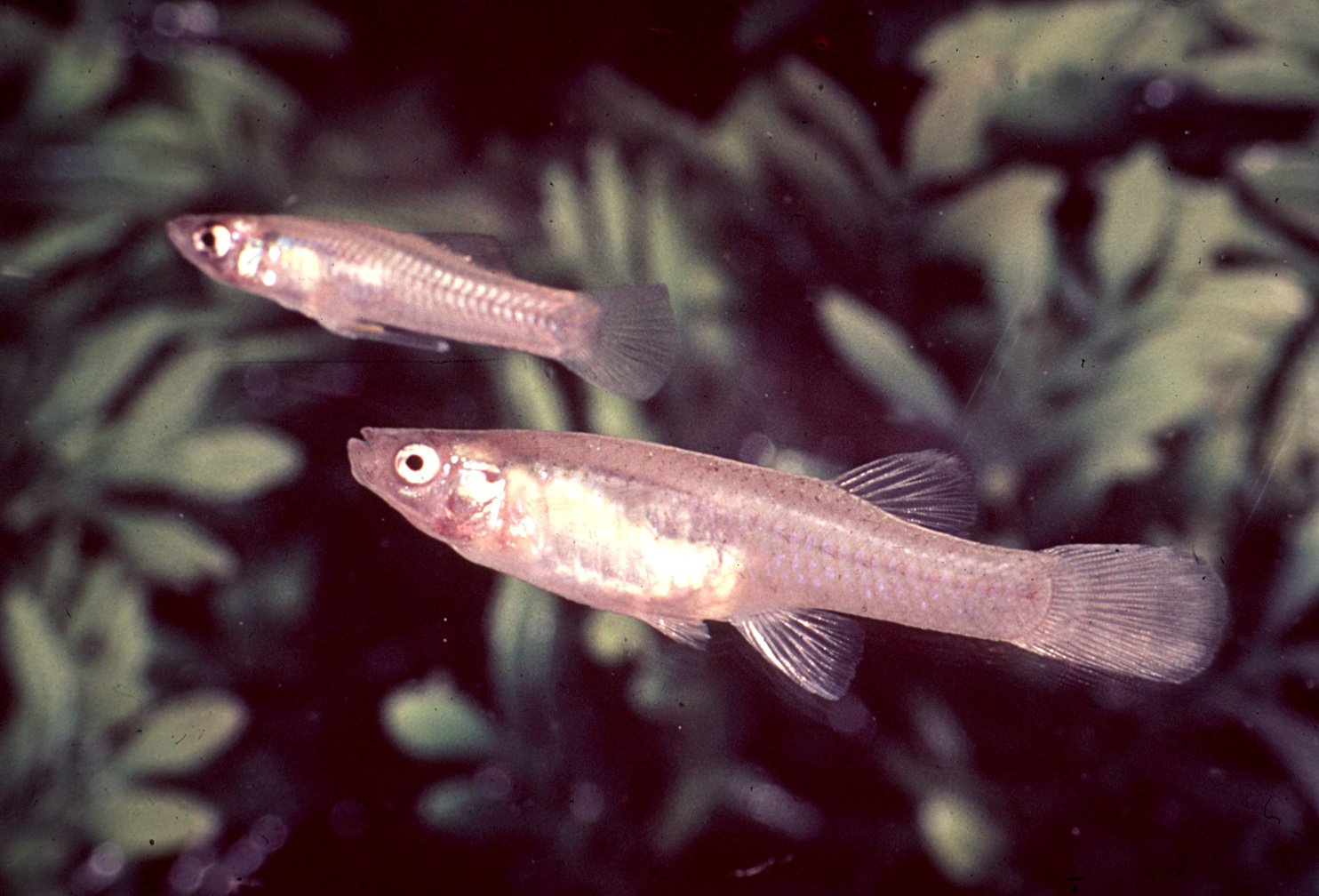
Oil and Gas Wastewater Spills Pollute the Lone Star State
Pollution from the energy sector has impacted soil, contaminated water resources and killed wildlife while the state resists new regulations.
Above: The Texon scar covers several hundred acres near Big Lake, Texas where "produced" water was discharged for decades. The land has still not recovered and a salty crust covers the soil, seen here in August 2023.
This article originally appeared on Inside Climate News, a nonprofit, independent news organization that covers climate, energy and the environment. It is republished with permission. Sign up for their newsletter here.
This article is part five of “State of Denial,” a series by Inside Climate News about Texas’ lax environmental regulations.
In the early 2000s, the city of Midland, Texas, detected contaminated well water on its T-Bar Ranch property, which it purchased as a source of drinking water back in 1965. The pollution was eventually traced to a spill of produced water, a byproduct of oil and gas drilling.
The multi-million dollar clean-up effort continues two decades later.
The city found elevated levels of chlorides and total dissolved solids in several wells at the ranch, signs of produced water, and eventually sued the oil and gas company Heritage Standard Corporation for leaking produced water at its storage tanks and waste ponds, causing it to leach into the groundwater.
Oil and gas drilling, and particularly hydraulic fracturing, or fracking, rely upon large quantities of water, sand and proprietary chemicals, some of which are toxic, to free the oil and gas from geologic formations deep underground. Produced water is the liquid waste that comes back to the surface and contains both the drilling fluids and groundwater that can contain naturally occurring hazardous compounds from the earth, including arsenic and organic compounds such as benzene, a carcinogen.
In March 2023, the city’s utility director presented next steps to the city council, describing the conduct of Heritage Standard employees.
“They didn’t line the pit, and they didn’t pay attention to the leak detection of their tank,” Carl Craigo said. “They, of course, said it wasn’t them, but it was proven over time.”

After the company filed for bankruptcy, Texas’ oil and gas regulatory agency, the Railroad Commission, spent $430,000 on remediation activities at the site. According to an RRC spokesperson, the agency did not fine Heritage Standard for the spill. Midland continued the remediation project, which was initially projected to cost $9 million, and has spent more than $3 million so far.
When the spill was discovered almost 20 years ago, Midland hadn’t yet begun piping water from the T-Bar Ranch into the city’s drinking water supply. But today, Midland relies on the ranch for about one-third of its drinking water, which future spills could jeopardize.
It’s just one example of how produced water spills devastate land, water and property across Texas and contaminate vital groundwater resources. Lawsuits, public records and interviews with scientists, attorneys, government officials and environmentalists provide significant evidence of harms from produced water spills in a state with lax regulations on industry, no statewide reporting standard for produced water spills, and no requirement that oil and gas companies notify landowners when spills take place, as they do a thousand times a year on average.
There is no public database in Texas to check whether produced water has spilled on landowners’ property or near their town or city’s water supply. And the Railroad Commission of Texas has still not formally adopted 2009 draft guidelines for reporting and cleaning up produced water spills.
Experts say companies often fail to report spills—as was the case at the T-Bar Ranch.
An Inside Climate News data analysis of Railroad Commission (RRC) records found that more than 148 million gallons of produced water were spilled between 2013 and 2022. Most of the more than 10,000 individual spills occurred on land, with about 350 contaminating bodies of water.
The Railroad Commission also acknowledged that the agency is managing more than 200 existing groundwater contamination incidents, some dating back decades, that were likely caused by produced water.
Meanwhile, the so-called Kills and Spills Team of the Texas Parks and Wildlife Department (TPWD) has documented dozens of spills that killed fish and other wildlife, and landowners across the state have demanded redress as produced water spills contaminate their land and property.
The RRC maintains that not all produced water spills are hazardous and relies on internal, unpublished protocols to determine which spills merit thorough investigation and remediation. To address produced water spills that threaten groundwater, like the case at the T-Bar Ranch, an RRC spokesperson said investigators consider factors like depth to water table and the volume and duration of the spill.
“If groundwater testing identifies contamination associated with the spill, then groundwater monitoring wells would be installed and monitored until corrective action is complete,” said spokesperson Patty Ramon.
The city of Midland did not reply to a request for comment.
Saltwater stains date back decades
Texas does not require the oil and gas industry to report the volume of produced water generated in the state. But a 2022 report estimated that 3.9 billion barrels, or more than 168 billion gallons, of produced water is generated in the Permian Basin alone every year.
Fracking a single well can require anywhere between 1.5 million and 16 million gallons per well, or more. Most produced water is ultimately disposed of in underground injection wells, but instances have been documented when it has seeped into aquifers or returned to the surface of the disposal wells. The highly saline water can render land barren for years.
The disposal wells are contributing to increased seismic activity in the Permian Basin, leading regulators and companies to explore alternatives, including treating produced water for reuse or for discharge into bodies of water. More companies are now recycling produced water to reuse in their drilling operations.
But the produced water problem isn’t new; the industry has known the damage these salty spills can cause since the early days of oil drilling in Texas. The starkest example is a place called Texon.
The first commercial oil strike in the Permian Basin was at Santa Rita #1 well in 1923. The town of Texon soon sprung up nearby. For decades, produced water from the wells was dumped onto the surrounding rangeland or diverted into canals.
The dumping killed hundreds of acres of vegetation, forming the Texon Scar. Despite decades of remediation, more than 700 acres are still reduced to a hard, crunchy soil, barren of vegetation, and visible in satellite photos.
Richard Brantley, executive vice president of University Lands, first worked on remediation at the Texon site in the 1990s. “I’ve been doing this for 40 years,” he said. “I’ve not really seen anything that is a magic bullet.”
University Lands, a state agency, manages 2.1 million acres of land in West Texas, including Santa Rita, and collects royalties from mineral leasing to fund Texas public universities. University Lands requires oil and gas companies to promptly report and remediate any produced water spills on their land.
It falls to the Railroad Commission, not University Lands, to set state reporting requirements for produced water spills. “But, the Railroad Commission, I would encourage them to look at that,” Brantley said.
Environmental impacts of spills not well-understood
Peer-reviewed research on the impacts of produced water spills is relatively limited. Microbiologist Denise Akob and hydrologist Isabelle Cozzarelli of the United States Geological Survey are working to change that. They have studied the impacts of produced water spills in West Virginia, North Dakota and New Mexico. Akob said this research offers a “toolbox” to understand the impacts of spills.
In West Virginia, they found a produced water disposal facility impacted a stream and altered the natural environment. Sediments downstream of the disposal site had high levels of radium and microbial communities were less diverse.
After a produced water spill into Blacktail Creek in North Dakota, the researchers found lithium, boron and strontium downstream at five to 10 times the concentration upstream.
Akob noted the specific constituents in produced water, and their concentration, vary based on each basin’s geology. Research findings from the Marcellus Shale of Pennsylvania, for example, may not apply to the oil and gas basins of Texas.
Texas researchers are studying what exactly is in the produced water in Texas oil and gas basins like the Permian. In a 2022 paper, researchers at New Mexico State University and the University of Texas at El Paso found produced water samples from the Permian Basin contained per- and polyfluoroalkyl substances—a group of chemicals known as PFAS that break down very slowly in the environment—and naturally occurring radioactive material.
Ramon, the RRC spokesperson, said companies “usually” report concentrations of “major anions and cations, metals, and hydrocarbons” to the agency. (Anions and cations are types of ions, atoms or molecules with an electrical charge.) RRC investigators also test for total dissolved solids, which roughly shows how much salt is in the water.
The spokesperson said constituents in produced water “vary significantly across the state.” She said the water in many cases “is not ‘toxic’” and that some oil and gas basins, including parts of the Carrizo and Trinity aquifers, produce freshwater.
The spokesperson said the agency can require testing for other specific constituents, including lithium, boron and radium, but did not specify under what circumstances.
Repeated spills contaminate east Texas waterways
The greatest volume of spills take place in the arid Permian Basin of West Texas. But in the East Texas region known as the Pineywoods, spills can be particularly damaging. In Gregg County, for example, oil and gas drill sites and disposal wells dot the forested edges of the winding Sabine River and its tributaries. Spills in this riparian zone impact both hardwood forests and the river ecosystem.
“The Railroad Commission kind of treats it as business as usual, unless it’s really catastrophic,” said Ron Adkison, an East Texas attorney who has secured settlements for landowners impacted by spills. Adkison said that spills are known to kill vegetation and poison or sicken cattle that consume the water.
“The Railroad Commission kind of treats it as business as usual, unless it’s really catastrophic.”
“There are creeks out here where there’s not any sign of wildlife anywhere around them because of the discharge of the saltwater,” Adkison added.
The Kills and Spills Team criss-crosses the state to document when pollution kills fish and other wildlife. It was called to Gregg County to investigate fish kills following produced water spills near the Sabine River more than two dozen times between 2013 and 2022. The team counted thousands of poisoned fish, along with freshwater mussels and turtles, in these incidents in the East Texas county.
Thirteen reports came in 2013 alone, with the biologists documenting seven different incidents that killed an estimated total of 7,736 fish that year.
A TPWD spokesperson said the agency responds when there are potential fish kills and oversees wildlife recovery and rehabilitation activities. This includes taking water quality measurements and testing for contaminants, including total petroleum hydrocarbons, volatile organic compounds, and benzene, toluene, ethylbenzene and xylene (a group of hydrocarbons).
According to TPWD, the agency also coordinates spill response in East Texas with the “produced water investigator” at the Environmental Protection Agency’s Region 6, headquartered in Dallas.
“There are creeks out here where there’s not any sign of wildlife anywhere around them because of the discharge of the saltwater.”
While the RRC is the primary agency responding to spills, the TPWD has authority to penalize responsible parties.But the spokesperson said that civil restitution for produced water spills “has not been sought since 2014.”
The frequency and volume of reported spills has declined in East Texas and overall since 2013. But the problem persists. Companies reported five produced water spills on bodies of water in Gregg County during 2022.
The RRC spokesperson said the Commission conducts “many inspections in areas that are environmentally sensitive and have oil and gas activity including Gregg County.”
“Operators are required to perform proper clean-up procedures if there are any pollution violations, and if not done in a timely manner, an escalation of enforcement response is initiated by the RRC,” the spokesperson said.
Spills on land impact groundwater
Produced water spills on land, which make up the majority of spills, can threaten aquifers when the water sinks below the surface. Saltwater is difficult to extract once it enters groundwater in aquifers.
“The salt works its way into all the nooks and crannies,” said Robert Mace, a hydrologist and executive director of the Meadows Center for Water and the Environment at Texas State University. “It’s like trying to catch a herd of stray cats, trying to lure them out.”
The Railroad Commission considers depth to water table, the volume and duration of the spill and “evidence of vertical penetration into permeable soils” to determine whether to test groundwater after a spill.
The commission spokesperson did not confirm any specific produced water spills or releases that caused groundwater contamination. But she acknowledged that produced water from oil and gas drilling has likely contaminated groundwater in the state.
“The salt works its way into all the nooks and crannies. It’s like trying to catch a herd of stray cats, trying to lure them out.
In the state’s latest Joint Groundwater Monitoring and Contamination Report, the Railroad Commission had included 557 groundwater contamination cases caused by oil and gas operations.
The spokesperson said cases where chloride contaminated the groundwater—of which there are 238 cases reported—were “most likely sourced from produced water.” This indicates that produced water entering the environment, whether from spills or other incidents, is a significant contributor to groundwater contamination in Texas.
The clean-up at the T-Bar Ranch is one example of how a spill or release of produced water on the surface can impact water far below and take years—and millions of dollars—to remediate.
Robert Rossi, a geochemist who studied produced water spills in California, said improved record-keeping, including geolocations of spills, could help identify trends and environmental impacts over time. The Railroad Commission spill logs, the basis of ICN’s analysis, do not include geolocations. State regulators do maintain a public map of confirmed groundwater contamination cases, but the map does not describe the contamination sources in all cases.
Rossi said geolocations would allow regulators to trace contamination migrating through groundwater to other areas. He stressed long-term groundwater monitoring is necessary to identify ongoing risks of large-scale spills.
He said even if spills take place in remote areas, regulators should be asking: “Is this water moving towards the agricultural areas or the areas where people have drinking water resources?”
Landowners resort to lawsuits after spills
Inside Climate News identified nine lawsuits filed since 2015, in which landowners from the West Texas Permian to the East Texas Pineywoods allege damages from produced water spills.
Oil and gas attorney Sarah Stogner of Monahans, Texas, said property owners have few options if the wastewater spills on their land.
She said landowners who wish to take legal action against companies have the burden to prove the damages with soil or water testing. Stogner said companies often offer settlements to buy out the surface owner. “It’s all a business decision,” Stogner said.
Since 2015, four of the lawsuits have been filed in East Texas, where landowners alleged damages to their property from produced water spills.
Elsewhere in Texas, lawsuits describe damages to trees, groundwater and vegetation. In a lawsuit filed in Galveston County in 2018, landowners alleged that produced water spills killed “decades-old oaks that cannot be replaced.”
Another 2018 lawsuit, in Victoria County, alleged that saltwater releases, “penetrated the Plaintiffs’ soils, destroying their lands and destroying their vegetation and crops.”
In a 2021 lawsuit, landowners in Refugio County alleged that Devon Energy spilled produced water that affected soil and the groundwater below their ranch. Devon Energy declined to comment on the lawsuit.
And in Knox County, north of Abilene, rancher Tim Foote sued after 132 of his cattle died after coming into contact with spilled produced water and oil. An appeals court agreed with the trial court’s decision that the company was not liable.
Former Texas Commission on Environmental Quality investigator Sheila Serna remembers spills and leaks that impacted residential areas outside Laredo. She was often the first to the scene when a call came in, before handing over the investigation to the RRC.
In one case, a line to an injection well burst, spreading produced water onto nearby properties.
“It was a mess,” said Serna, who is now climate science and policy director at the Rio Grande International Study Center. “I had never really seen anything like that before.”
But Serna said expecting companies to call in these spills without specific rules is wishful thinking.
“Self-reporting is not working,” she said.
The RRC spokesperson encouraged property owners to report any concerns about produced water spills to the nearest District Office.
But landowners and their attorneys lament the absence of state rules governing such spills. And that, they say, means in areas with oil and gas drilling, these salty spills have become, and will remain, a part of the landscape—and once the salt seeps into the soil, it’s not going away anytime soon.



